Before our world became filled with digital beeps and notification chimes, we lived in a landscape rich with mechanical sounds that marked the rhythm of daily life. These authentic analog noises—each with its distinct personality and meaning—formed the soundtrack of our formative years. For those who grew up before the digital revolution, these sounds weren’t just background noise; they were signposts of experience, carrying emotional weight and memories that can transport us back in time with surprising clarity.
1. The Mechanical Ding of a Gas Station Driveway Bell

Rolling over those black rubber hoses at the full-service gas station triggered a distinctive ding that alerted attendants to your arrival. This cheerful sound meant someone would soon appear at your window, ready to fill your tank, check your oil, and clean your windshield with a level of service that seems almost fantastical today. That simple bell represented a human connection—a moment when commerce still meant face-to-face interaction rather than faceless transactions. Of course, as CNN notes, there is one state where the gas station experience is very different for residents compared to everywhere else.
The gas station bell’s tone varied from station to station, giving each establishment its own auditory signature that regular customers could recognize. Children would often beg parents to drive over the hose repeatedly, delighting in their newfound power to make something happen in the adult world. The sound marked the beginning of a brief but meaningful ritual where strangers engaged in a dance of courtesy, with weather comments exchanged and travel advice freely given while the numbers on the pumps spun far more slowly than today’s digital counters.
2. The Satisfying Ca-Chunk of a Record Dropping on a Stacked Turntable
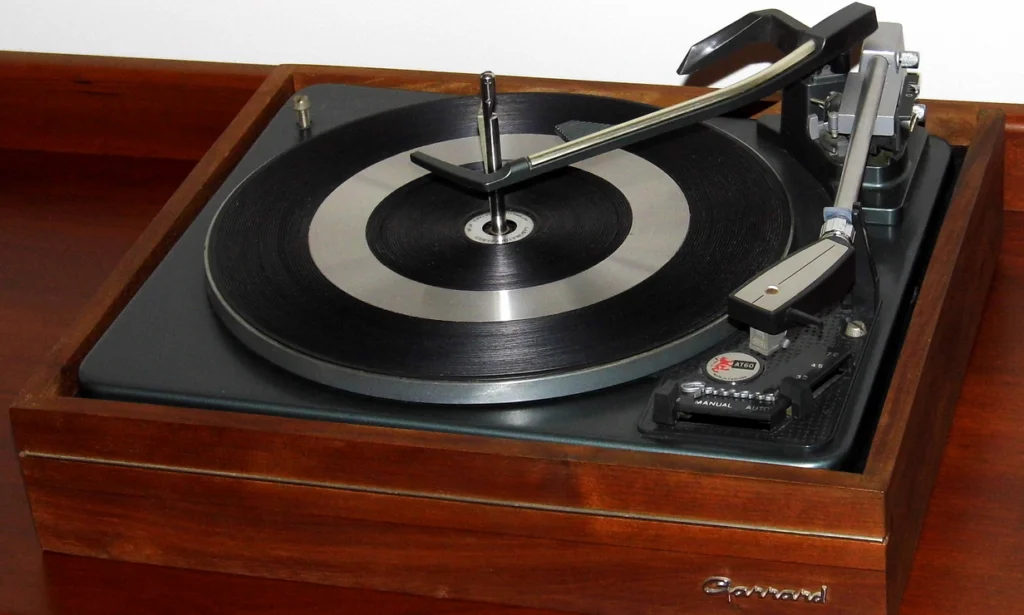
When you carefully loaded your favorite albums onto the spindle of an automatic record player, each vinyl disc would drop with a distinctive mechanical sound that signaled the beginning of musical enjoyment. That momentary pause between records—filled with mechanical movement and anticipation—created a natural intermission in the listening experience, giving listeners time to reflect on what they’d heard before the next album began. The sound itself was almost ceremonial, announcing that technology was working its modest magic to bring music into your living room. HowStuffWorks crackles to life with information about just how these handsome devices wroked.
The sequence—mechanical whir, ca-chunk of the record dropping, soft scratch as the needle found its groove, then music—created a sensory experience far richer than today’s silent streaming. Family members in other rooms could track the progress of the music by these sounds alone, knowing exactly when to return for their favorite songs. The physical nature of this sound reminded listeners of the mechanical miracle taking place—a needle reading microscopic grooves to recreate everything from Beethoven to the Beatles in your own home.
3. The Busy Signal on a Rotary Telephone
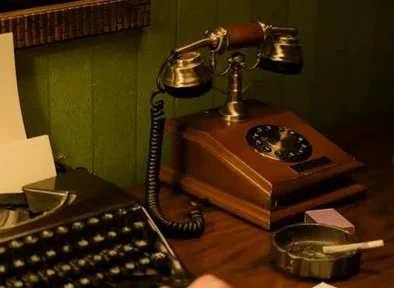
Few sounds communicated unavailability more clearly than the rapid-fire beep-beep-beep of a telephone busy signal echoing through a plastic handset. Unlike today’s instant messaging and call waiting, this authoritative sound firmly announced that the person you were trying to reach was already engaged in conversation with someone else. The busy signal taught patience and timing—you might need to try several times before connecting, creating a small victory when you finally heard the more welcoming ring tone. Interesting Engineering holds the secrets to just how these mistfying dials worked.
This sound carried emotional weight—frustrating when trying to reach a friend to share exciting news, concerning when calling family during emergencies, or even secretly relieving when avoiding a difficult conversation. People developed busy signal strategies, like waiting exactly five minutes before trying again or calling at specific times when they thought the line might be free. The death of the busy signal with the advent of voicemail and call waiting eliminated not just a sound but a shared cultural experience of anticipation and persistence.
4. The Tactile Click of a Television Dial
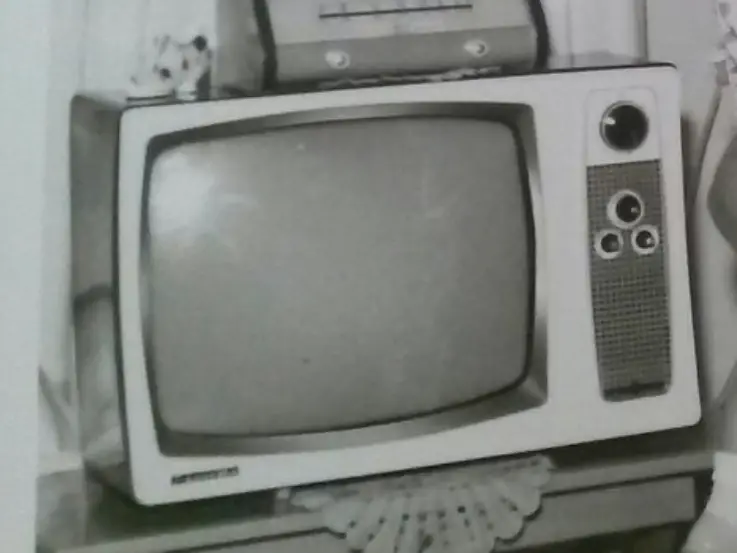
Before remote controls became standard, changing channels meant walking to the television and physically rotating a dial that moved through positions with a satisfying mechanical click at each station. This deliberate action made channel selection a conscious choice rather than the mindless surfing we engage in today. The distinct feel of resistance followed by release as the dial clicked into place provided tactile feedback that connected viewers physically to their entertainment choices.
The limited number of clicks (typically 12 or 13 on many sets) reflected a simpler media landscape where viewing options were finite and shared by entire communities. Families developed channel-changing protocols—with children often serving as human remote controls at a parent’s request—creating small moments of negotiation and cooperation around viewing decisions. The sound itself became so ingrained in the collective consciousness that many people continued to use the phrase “click through channels” long after dials had been replaced by silent buttons and eventually voice commands.
5. The Warning Bell of a Railroad Crossing
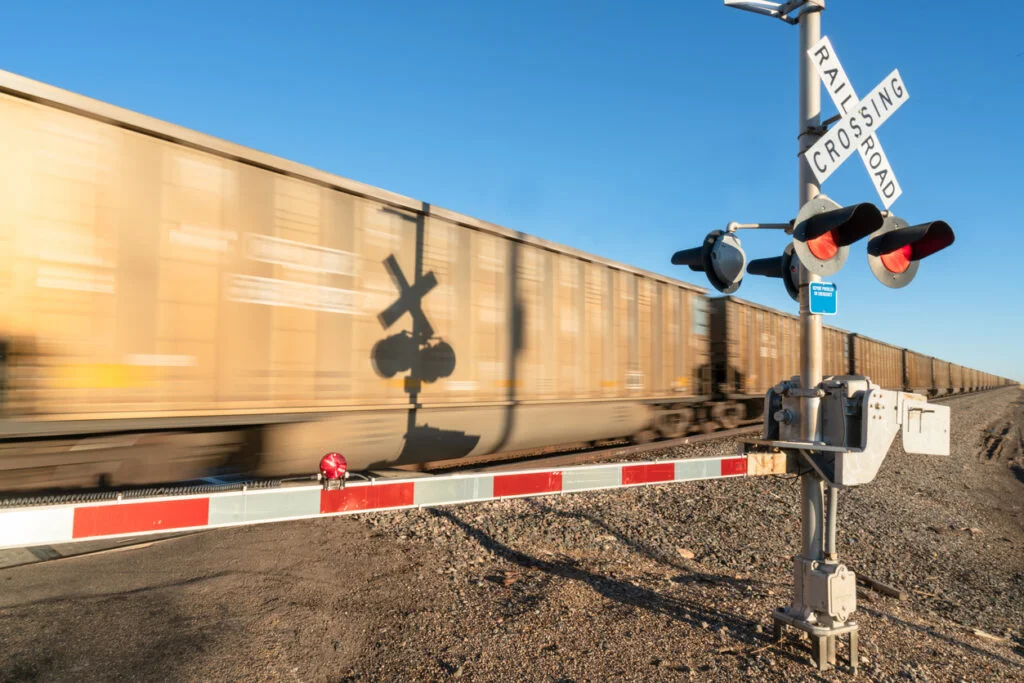
The rhythmic ding-ding-ding of railroad crossing bells provided both practical warning and a moment of excitement as traffic stopped to make way for these industrial giants. Children would count the passing train cars while adults drummed fingers on steering wheels, creating a forced pause in increasingly busy days. The distinctive sound carried for blocks, allowing neighborhoods to orient themselves around this technological heartbeat that connected communities to the broader national infrastructure.
The crossing bell’s urgency contrasted with the mournful sound of the train whistle, creating a rich soundscape that announced progress and movement across the landscape. Local residents developed an unconscious awareness of train schedules, incorporating these regular sonic interruptions into their mental maps of daily life. As railroad crossings have increasingly been replaced by overpasses or silent electronic warnings, we’ve lost this communal moment of pause—a brief, shared acknowledgment of forces larger than ourselves passing through our local environment.
6. The Zippy Whir of a Film Advance Lever

After each cherished photograph taken on a 35mm camera, the firm push of the film advance lever created a zippy mechanical sound that prepared the camera for the next shot. This sound represented technological constraint—the physical reminder that each image had real-world costs in film and developing, making each shot a deliberate choice rather than today’s digital abundance. The ritual of advancing film created natural pauses between photographs, giving subjects time to prepare new poses and photographers time to reconsider composition.
The sound itself varied subtly between camera brands, with enthusiasts often able to identify a Nikon from a Canon by ear alone. The film advance sound sometimes appeared in movies and television as shorthand for intense scrutiny or documentation, becoming part of our cultural vocabulary even for people who never owned cameras themselves. When digital cameras eliminated this sound (along with the need for film itself), photography lost not just a noise but a physical interaction that had shaped how generations experienced the act of preserving memories.
7. The Scrape and Sizzle of a Match Being Struck
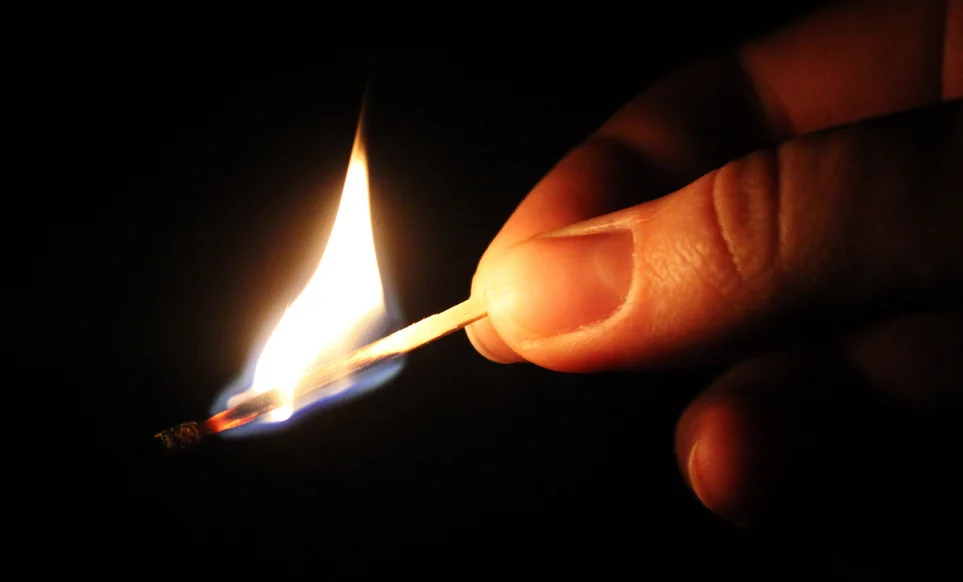
Before lighters became ubiquitous and smoking fell out of fashion, the distinctive scratch-flare-sizzle of a match being struck was the prologue to countless social rituals. This brief but dramatic sound effect announced the lighting of birthday candles, campfires, dinner candles, and yes, countless cigarettes smoked in living rooms, restaurants, and offices across America. The sound was both ordinary and magical—the everyday miracle of fire being called forth by human hands.
Match striking created a multi-sensory experience—the sulfur smell, the sudden light, and that unmistakable acoustic signature combining into a moment of minor drama. Children learned early to associate this sound with both celebration (special meals, holiday gatherings) and adult privilege (smoking being firmly in the realm of grown-up activities). As smoking rates declined and fire safety concerns grew, this once-common sound retreated from daily life, now emerging mainly during power outages or special occasions when modern alternatives fail or lack ceremonial weight.
8. The Clatter of a Manual Typewriter
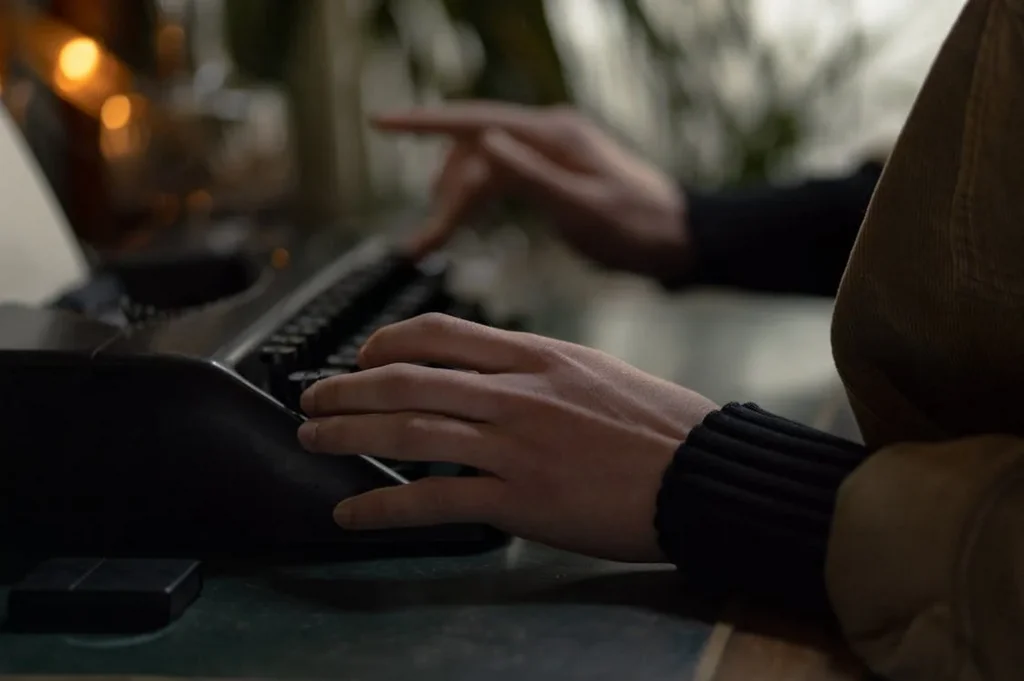
Few sounds represented productive work more clearly than the rhythmic clacking of typewriter keys striking paper, punctuated by the distinctive ding and carriage return at the end of each line. This mechanical symphony announced that important words were being recorded, whether in busy newsrooms, school offices, or home studies where family members knew to speak in hushed tones around the working typist. The sound had a percussive quality that many writers found conducive to thought, with the physical effort required creating a direct connection between mind and page.
Each typewriter had its own acoustic personality—from the authoritative clack of an IBM Selectric to the lighter touch of portable models—giving writers a signature sound as distinctive as their prose. Mistakes produced their own subcategory of sounds: the frustrated multiple strikes over an error, the gentle zip of correction tape, or the violent cranking when removing paper to start again. When computers replaced typewriters, offices and homes became dramatically quieter, eliminating not just a sound but a tangible connection between physical effort and written creation that had defined correspondence for generations.
9. The Melodic Ice Cream Truck Jingle

The tinny, repetitive melodies of approaching ice cream trucks created an instantaneous Pavlovian response in children across neighborhoods nationwide. This distant music—growing gradually louder—triggered a scramble for change and parental permission before the truck completed its slow journey down the street. The sound created a communal experience as children emerged from yards and houses, congregating around the vehicle in a spontaneous social gathering centered on frozen treats.
Parents used the distinctive sound as both bribery and threat (“If you don’t behave, you won’t get anything when the ice cream man comes”) while children developed acute hearing specifically attuned to this melody even when playing blocks away. Different trucks played different tunes—”Turkey in the Straw,” “The Entertainer,” or “Pop Goes the Weasel”—creating regional and generational differences in ice cream truck nostalgia. Though still existing in some areas, noise ordinances, parental safety concerns, and the ubiquity of home freezers stocked with treats have made this once-common summer soundtrack increasingly rare.
10. The Metallic Ping of Pinball Machines
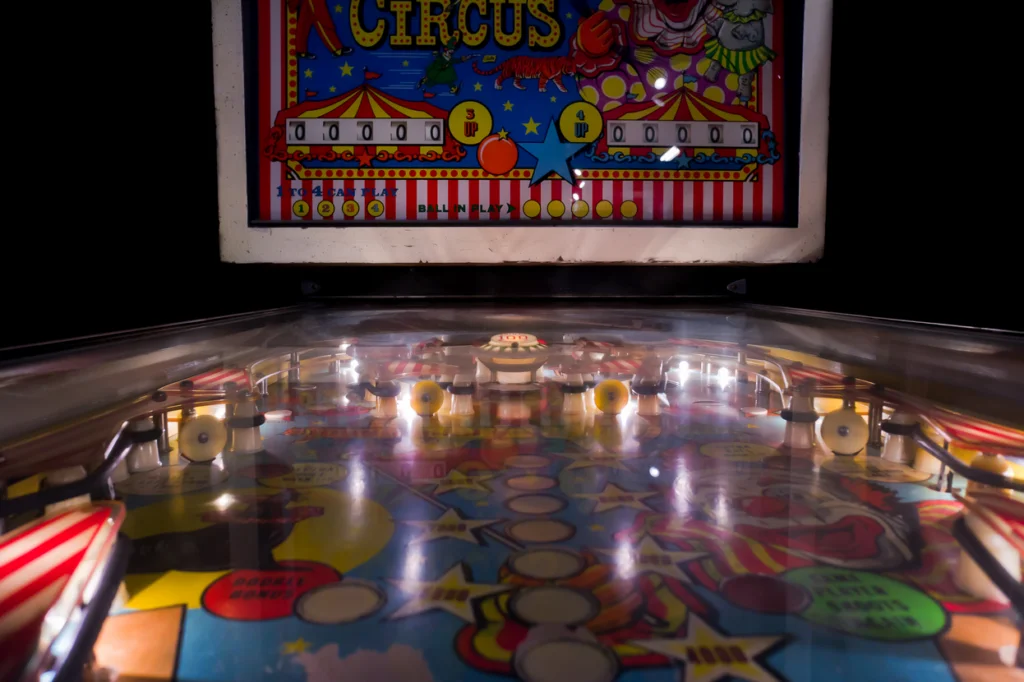
The cacophony of sounds emanating from arcade pinball machines—bells, buzzers, and that distinctive metallic ping of steel balls hitting bumpers—created the soundtrack for countless teenage hangouts and bowling alley adventures. Each successful hit produced immediate auditory feedback, creating a satisfying connection between player action and machine response. The soundscape ramped up with successful play, rewarding skilled players with not just points but an increasingly frenzied symphony of mechanical celebration.
These authentic analog sounds couldn’t be muted (unlike today’s digital games), making pinball a community experience where onlookers could track a player’s success by sound alone. The climactic moments—multi-ball releases or bonus rounds—produced distinctive audio signatures that attracted audiences from across the arcade. When video games began replacing pinball machines, they initially attempted to replicate these beloved mechanical sounds through primitive digital audio, acknowledging how central these noises were to the gaming experience.
11. The Crinkle of TV Dinner Aluminum Foil
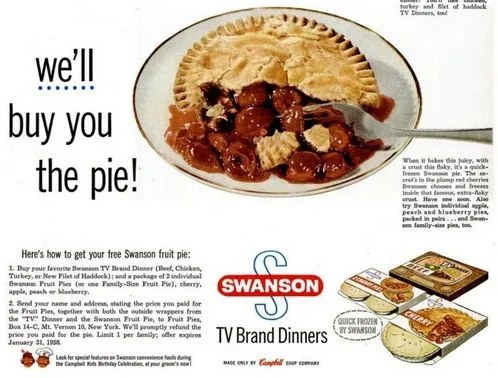
The distinctive crinkle of aluminum foil being peeled back from a compartmentalized TV dinner tray announced a special kind of American dining experience that balanced novelty with convenience. This sound marked the transition from preparation to consumption in one of America’s earliest convenience foods, which despite its simplicity still required the ritual unwrapping of each carefully separated section. The foil’s resistance followed by sudden release created a mini-moment of revelation as predetermined portions of salisbury steak, mashed potatoes, and apple cobbler were unveiled in their molded compartments.
Children found particular delight in this unwrapping responsibility, often assigned this task while parents attended to other dinner preparations. The sound connected families to the modern world of convenience foods while still maintaining the structure of a proper meal with separate components. As plastic packaging and microwave cooking eventually replaced foil-covered aluminum trays, meals became quieter but lost the tactile pleasure of this reveal—a small sensory experience that had united families across economic backgrounds in a shared modern ritual.
12. The Authoritative Slam of Metal School Lockers
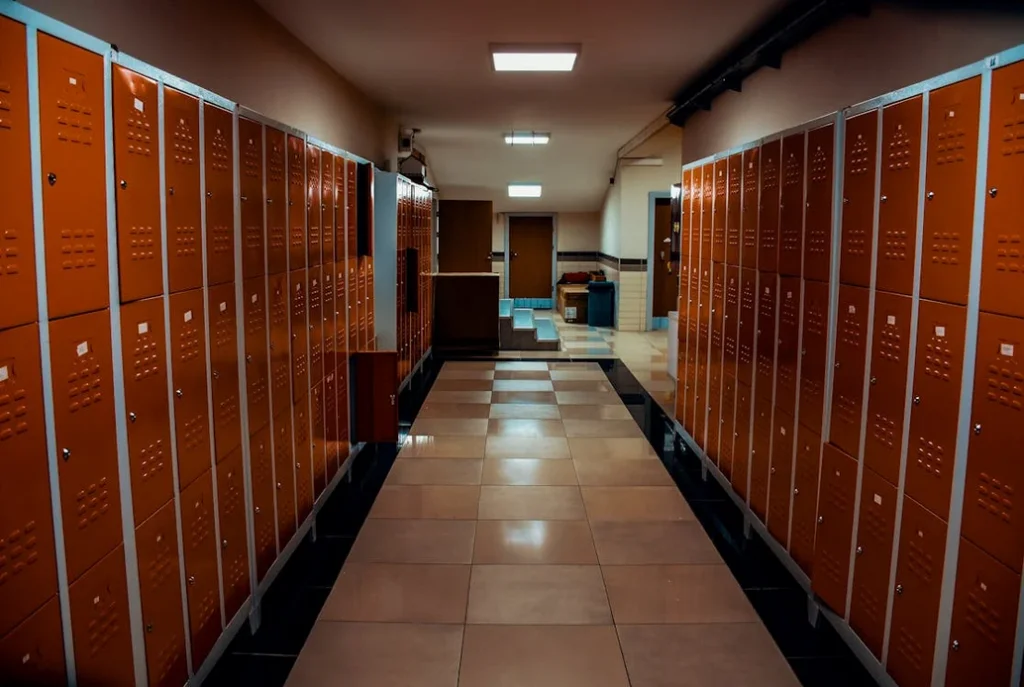
The cacophonous symphony of metal school lockers being opened and closed created a distinctive auditory backdrop for American teenage life from the 1950s through the 1990s. This institutional sound marked the rhythms of the school day—the chaotic crescendo between class periods followed by the sudden silence that signaled tardy students were in trouble. The distinctive clang possessed a finality that electronic beeps or plastic clicks can never replicate—a physical punctuation mark ending one academic period and beginning another.
Learning to open a combination lock with a distinctive click became a middle school rite of passage, separating the newly minted adolescents from elementary school children. Students developed personalized series of slams, kicks, and bangs to address stuck mechanisms, creating informal sonic signatures recognizable to friends nearby. As schools increasingly move toward digital solutions or open cubbies for security and monitoring reasons, this once-universal sound experience has become increasingly rare, removing not just a noise but a tactile connection to educational infrastructure that shaped how generations physically navigated their school environments.
13. The Static and Frequency Search of AM/FM Radio Dials
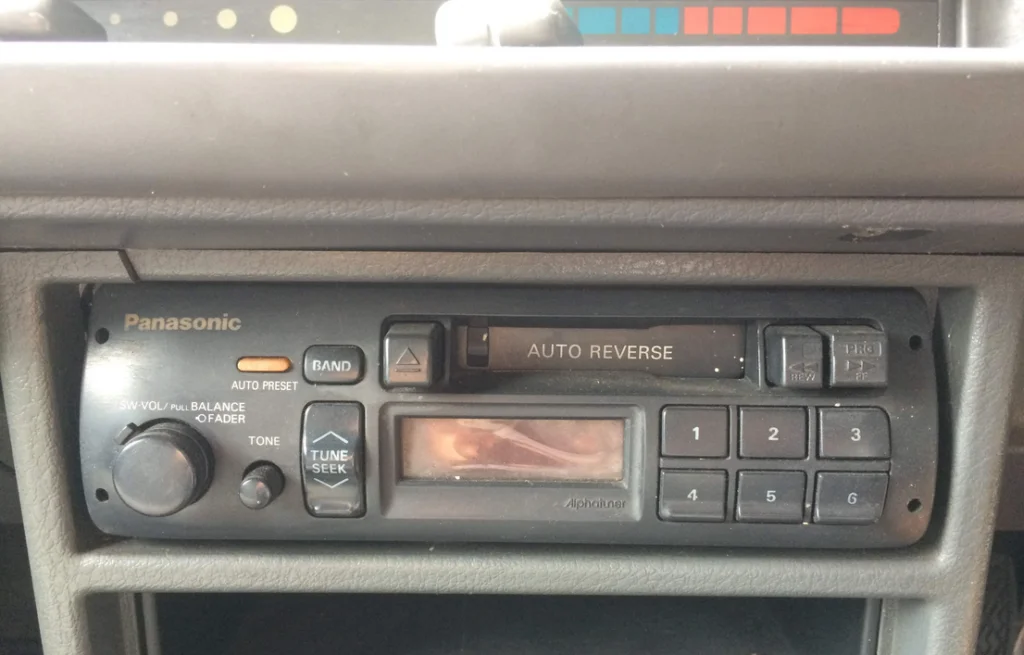
The journey through radio frequencies created a distinctive soundtrack—static giving way to partial signals, voices fading in and out—as listeners turned dials in search of favorite stations. This sonic exploration represented the mystery of invisible signals traveling through air, captured through careful manipulation of antenna and position. The satisfaction of finally tuning in a clear signal after navigating the static created a small triumph that connected listeners to the broader world beyond their immediate environment.
Car radios elevated this experience further, with stations fading and new ones emerging as vehicles traveled beyond the broadcast range of local stations. Family road trips often featured good-natured arguments over station selection, with the physical control of the dial representing real power in the enclosed space of a moving vehicle. Digital tuning and presets eventually eliminated this sonic journey between stations, replacing the gradual discovery process with instant, silent transitions that removed both the frustration and serendipity of finding unexpected content between established frequencies.
These forgotten sounds represent more than mere nostalgia—they mark the physical interaction between humans and their tools, environments, and each other that defined daily life for generations. Today’s world may be more convenient and connected in many ways, but it’s also considerably quieter, having lost the rich mechanical symphony that once announced our actions and choices with distinctive acoustic signatures. Perhaps in recognizing what we’ve lost, we might find ways to preserve or reimagine the sensory richness that connected us not just to each other but to the physical reality of the world around us.


